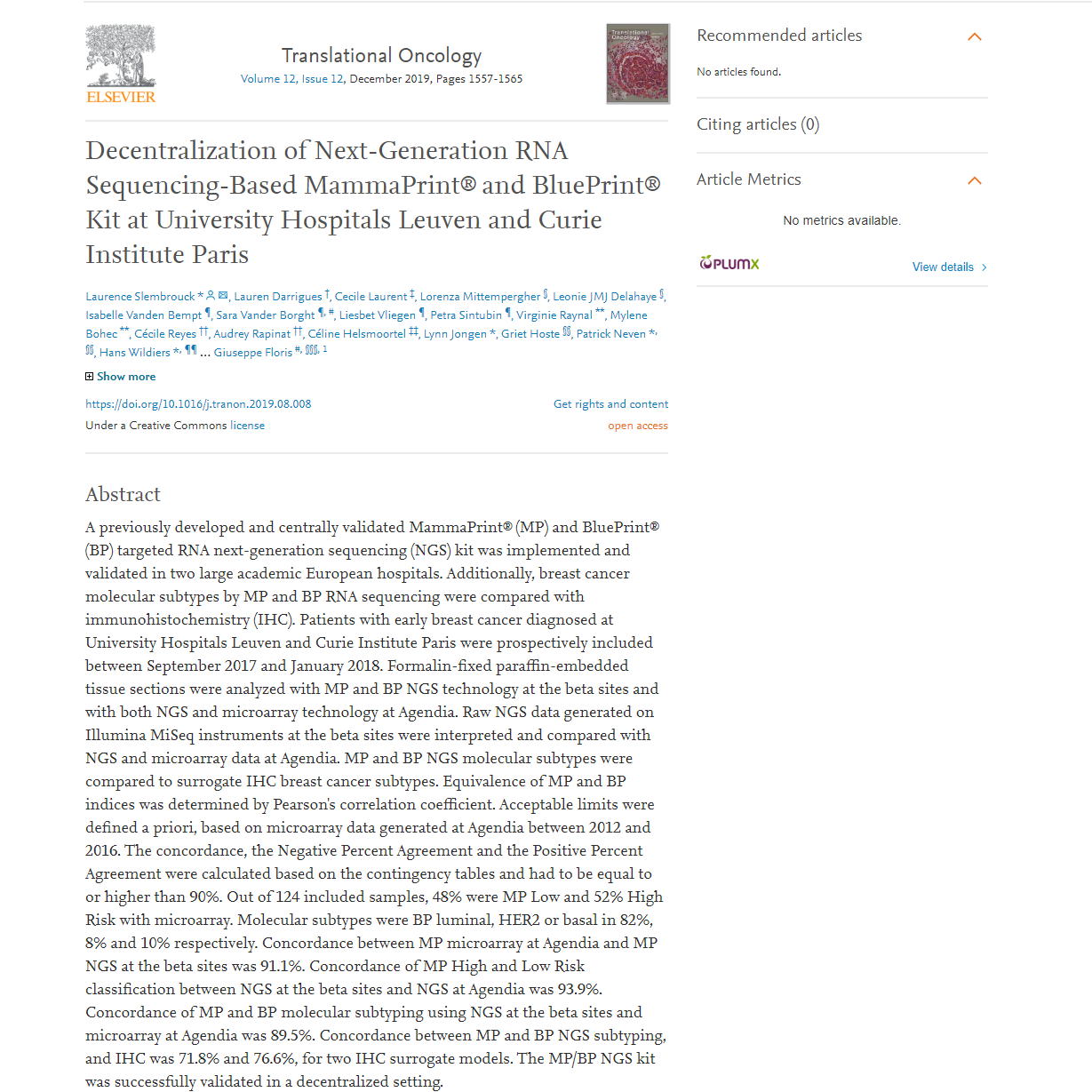PUBLICATION: 
Transl Oncol. 2019 Sep 9;12(12):1557-1565. doi: 10.1016/j.tranon.2019.08.008.
AUTHORS:
Slembrouck L., Darrigues L., Laurent C., Mittempergher L., Delahaye L.J., Vanden Bempt I., Vander Borght S., Vliegen L., Sintubin P., Raynal V., Bohec M., Reyes C., Rapinat A., Helsmoortel C., Jongen L., Hoste G., Neven P., Wildiers H., Smeets A., Nevelsteen I., Punie K., Van Nieuwenhuysen E., Han S., Vincent Salomon A., Laas Faron E., Cynober T., Gentien D., Baulande S., Snel M.H., Witteveen A.T., Neijenhuis S., Glas A.M., Reyal F., Floris G.
SUMMARY:
Out of 124 included samples, 48% were MP Low and 52% High Risk with microarray. Molecular subtypes were BP luminal, HER2 or basal in 82%, 8% and 10% respectively. Concordance between MP microarray at Agendia and MP NGS at the beta sites was 91.1%. Concordance of MP High and Low Risk classification between NGS at the beta sites and NGS at Agendia was 93.9%. Concordance of MP and BP molecular subtyping using NGS at the beta sites and microarray at Agendia was 89.5%.
Read more: Slembrouck et al_2019_Translational Oncology_Decentralization of Next-Generation RNA…

